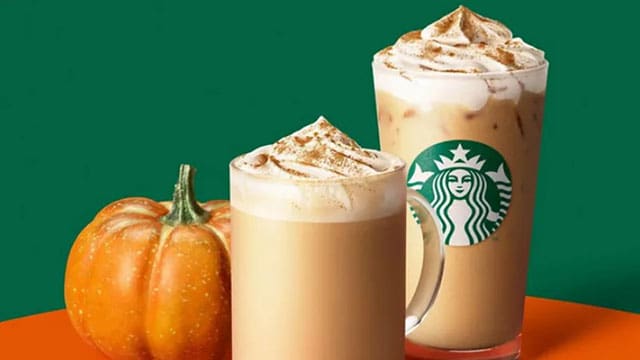The pumpkin spice reign is losing steam. Starbucks may need to shake things up with some new flavours
 As the back-to-school season ushers in familiar routines, Canadians are once again gravitating to their favourite “third place” – the coffee shop – a concept popularized by sociologist Ray Oldenburg in his book The Great Good Place. Among the seasonal delights, pumpkin spice has firmly entrenched itself as the flavour synonymous with Fall.
As the back-to-school season ushers in familiar routines, Canadians are once again gravitating to their favourite “third place” – the coffee shop – a concept popularized by sociologist Ray Oldenburg in his book The Great Good Place. Among the seasonal delights, pumpkin spice has firmly entrenched itself as the flavour synonymous with Fall.
This trend, which Starbucks ignited in 2003, has grown into a cultural phenomenon, generating an estimated US$500 million in revenue from pumpkin spice lattes and related products alone. That translates to approximately 75 million cups, making it arguably the most popular seasonal drink ever.
Despite its success, pumpkin spice represents just a fraction of Starbucks’ overall annual revenue, which exceeds US$36 billion. The flavour’s appeal is rooted in its ability to evoke nostalgia and comfort, factors that have contributed to its lasting popularity. However, questions are starting to arise about how much longer this seasonal favourite can continue to captivate consumers and sustain its influence.
 Image courtesy Starbucks |
| Related Stories |
| Five things your business could learn from Starbucks
|
| Can Starbucks save the planet?
|
| Golden Arches faces mounting pressure
|
Seasonal flavours like pumpkin spice are unique in their ability to distinctly signal the change of seasons. Starbucks’ success with this flavour is impressive, but it may soon need to innovate to maintain its market position. As prices rise, many consumers are beginning to recreate their favourite pumpkin spice drinks at home, a trend reflected in Starbucks’ recent quarterly results, which indicate a decline in customer visits. More people are choosing to drink coffee at work, where it is often free, or brew it at home to save money.
As newer generations gain economic influence, their tastes are proving to be more diverse and dynamic. Not all flavours withstand the test of time – consider the decline of licorice, once a beloved treat in many parts of the world. Offering new, unique flavours could be crucial to cater to evolving consumer preferences. The concern is not just about maintaining sales but also about preventing flavour fatigue, as pumpkin spice’s overwhelming popularity may cannibalize the sales of other products.
This year, Starbucks launched its pumpkin spice campaign on August 21, the earliest ever. The early launch underscores the pressure the company is under to boost sales in a challenging economic environment where growth in the food service industry is increasingly hard to come by.
Industry-wide sales data for pumpkin spice-flavoured drinks indicate looming challenges. Although dollar sales in the U.S. rose by 15 percent for the 52 weeks ending in 2023, unit sales decreased by 1.5 percent for the second consecutive year, according to NielsenIQ. This suggests that while revenues are increasing, fewer drinks are being sold in the U.S. It’s reasonable to suspect a similar trend may be unfolding in Canada.
Furthermore, it’s worth noting that the pumpkin spice latte (PSL) itself is not without its controversies. For instance, the drink contains no actual pumpkin, a point of concern for some consumers. Additionally, a Grande pumpkin spice latte contains 50 grams of sugar – exceeding the recommended daily intake for an adult.
The industry doesn’t necessarily need to replace pumpkin spice but should consider evolving it – finding a “Pumpkin Spice 2.0.” Like most food trends, pumpkin spice may slowly fade as consumer interests shift. Peter Dukes, the creator of the pumpkin spice latte at Starbucks, once remarked that the flavour was never intended to be a commercial product. Yet, its uniqueness proved to be a defining factor in its success.
Looking ahead, exploring new flavours could be a strategic move. Consider the potential of sweet potato and marshmallow, rhubarb, ginger, or even rhubarb and rose. In fact, rhubarb appears to be gaining popularity, offering an intriguing alternative to pumpkin spice.
After more than 20 years, perhaps it’s time to truly spice things up – pun intended.
Dr. Sylvain Charlebois, a Canadian professor and researcher specializing in food distribution and policy, is a senior director of the Agri-Food Analytics Lab at Dalhousie University and Co-Host of The Food Professor Podcast. He is frequently cited in the media for his insights on food prices, agricultural trends, and the global food supply chain.
For interview requests, click here.
The opinions expressed by our columnists and contributors are theirs alone and do not inherently or expressly reflect the views of our publication.
© Troy Media
Troy Media is an editorial content provider to media outlets and its own hosted community news outlets across Canada.

